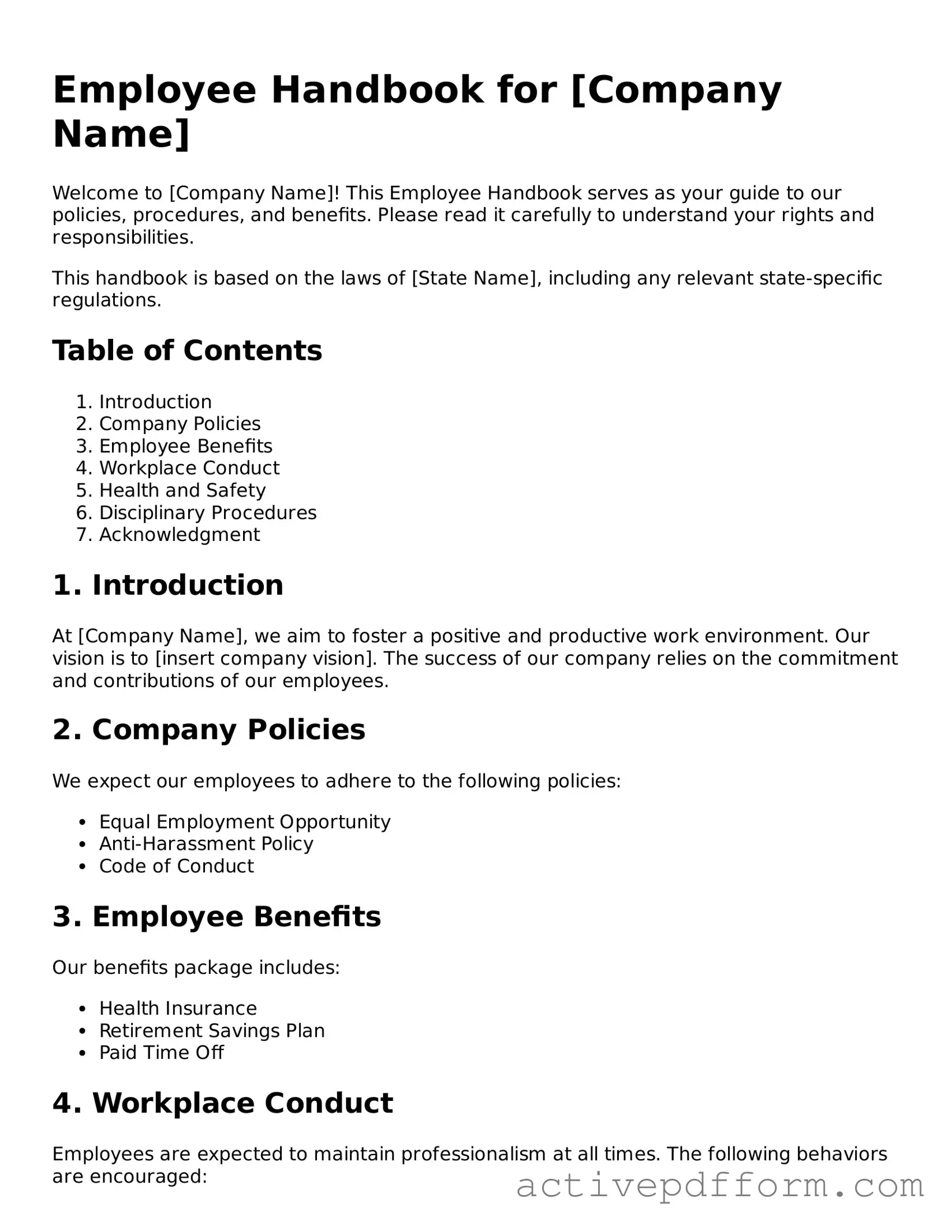What is the purpose of the Employee Handbook?
The Employee Handbook serves as a comprehensive guide for employees. It outlines the company's policies, procedures, and expectations. This document helps ensure that everyone understands their rights and responsibilities within the workplace, fostering a positive and productive environment.
Who should receive a copy of the Employee Handbook?
All employees should receive a copy of the Employee Handbook, regardless of their position or length of service. New hires typically receive it during their onboarding process. Existing employees should also have access to the handbook to stay informed about any updates or changes to policies.
How often is the Employee Handbook updated?
The Employee Handbook is reviewed and updated regularly, at least once a year or whenever significant changes occur in company policies or applicable laws. Employees will be notified of any updates to ensure they are aware of the latest information.
What should I do if I have questions about the Employee Handbook?
If you have questions about the Employee Handbook, you should reach out to your supervisor or the Human Resources department. They can provide clarification on any policies or procedures that may be unclear. Open communication is encouraged to ensure everyone understands the handbook's contents.
Is it mandatory to sign an acknowledgment of receipt of the Employee Handbook?
Yes, it is typically mandatory for employees to sign an acknowledgment form indicating they have received and read the Employee Handbook. This signature helps confirm that employees understand the policies and agree to abide by them.
What happens if I violate a policy outlined in the Employee Handbook?
Violating a policy in the Employee Handbook may lead to disciplinary action, which can range from a verbal warning to termination, depending on the severity of the violation. The handbook outlines the consequences for various infractions to ensure fairness and consistency in enforcement.
Can the Employee Handbook be used in legal disputes?
Yes, the Employee Handbook can be referenced in legal disputes. It serves as a record of the company's policies and practices. However, it's important to note that the handbook should not be considered a contract. Policies may be subject to change, and the company retains the right to modify them as needed.
What if I disagree with a policy in the Employee Handbook?
If you disagree with a policy, it's important to voice your concerns through the appropriate channels. Discuss your thoughts with your supervisor or HR. Open dialogue can lead to a better understanding of the policy and may even prompt a review if there are valid concerns.
